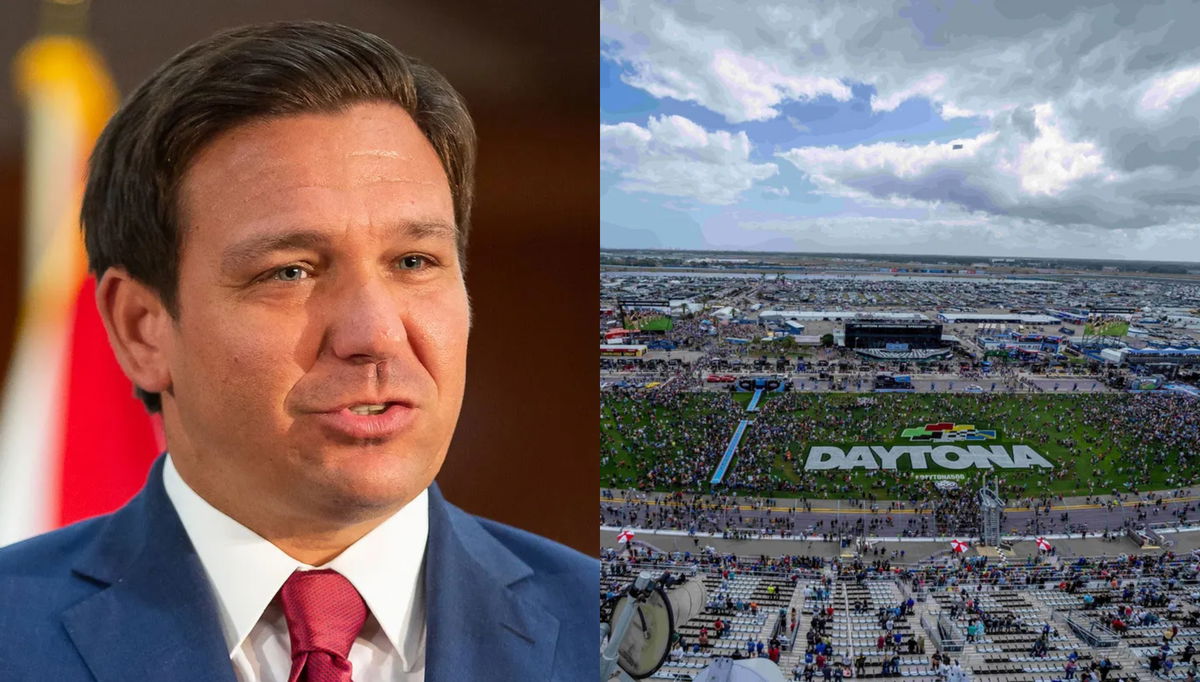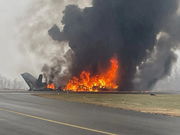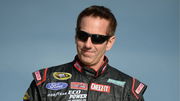
Imago
via Britannica.com

Imago
via Britannica.com
Long before asphalt and grandstands, Daytona Beach’s hard-packed sands hosted roaring land-speed trials, earning the area the nickname “Birthplace of Speed.” In the 1950s, NASCAR founder Bill France Sr. envisioned a safer and more enduring venue, and by 1959, that dream had taken shape as the Daytona International Speedway. With its 31-degree high banks and the inaugural Daytona 500, it instantly became motorsports’ “World Center of Racing,” a title proudly upheld through decades of innovation and adrenaline. Yet as much as the track’s apex moments galvanized fans, it was the details that truly cemented its cultural place.
Watch What’s Trending Now!
Beyond photo finishes and checkered flags, Daytona’s surroundings have become as iconic as the track. “We always say, ‘If it has wheels, we’ll race it here!'” declared Speedway president Chip Wile, pointing to the range of spectacles the venue hosts, race day to not. From the glowing glow of night racing after 1998’s stadium lighting installation to the sweeping “Daytona Rising” overhaul between 2013 and 2016, adding injectors, wider seating tiers, and modern amenities, Daytona’s physical face changed to reflect what the sport had become. Yet even seemingly small symbols, like the checkered-flag crosswalks embedded outside the gates, silently became treasured cues for fans. And now, one of those symbolic touches has quietly disappeared, raising challenging questions about identity, tradition, and power.
ADVERTISEMENT
Statewide ban on asphalt art extends its reach to NASCAR’s front door
Daytona International Speedway is no stranger to changes, but this time it involves the very streets surrounding the legendary venue. The checkered-flag crosswalks, an unmistakable nod to NASCAR’s heritage and a familiar sight for fans walking to the track, are now facing removal. “By dawn’s first light on Wednesday, Aug. 27, the race-themed design was gone from the crosswalk at the intersection of Bill France and International Speedway boulevards in Daytona Beach, replaced by standard broad white road stripes,” reported the Daytona Beach News-Journal. What once stood as a symbolic welcome to racing’s cathedral has now become caught in the crosshairs of state policy.
The move stems from a notification by the Florida Department of Transportation (FDOT), which confirmed its intent to repaint the crosswalks as part of what it calls a “statewide standardization of those designs.” For Speedway officials, the decision came directly from the state level. Susan Cerbone, spokeswoman for the City of Daytona Beach, admitted some surprise, noting, “As far as I know, the city hasn’t received any official notification from FDOT, although, I’ve heard the speedway was notified directly about DOT‘s plans to repaint the checkerboard crosswalks.” Attempts to get further clarification from FDOT’s District 5 office went unanswered. The sudden nature of the order raised questions, particularly given the cultural and visual significance these crosswalks have held during major NASCAR weekends.
At a press conference in Tampa on August 26th, Gov. Ron DeSantis doubled done on the rationale behind the removal of such street art. “The Florida legislature passed a law that was very clear … we’re not doing the commandeering of the roads to put up messaging,” he said. “We’ve made the policy decision in Florida that we’re not going to use the roads for that purpose.” For his administration, it was less about symbolism itself and more about a sweeping ban on designs, regardless of theme or meaning. Still, critics have pointed out the larger implications of such moves, calling them politically charged and unnecessary.
ADVERTISEMENT
“Daytona International Speedway’s checkered-flag crosswalks outside the famed motorsports track must be removed, the latest casualty in a crackdown by Gov. Ron DeSantis that already ignited a controversy outside the Pulse nightclub memorial in Orlando.” https://t.co/RwUURKAwa0
— Adam Stern (@A_S12) August 27, 2025
For advocacy groups like Volusia Pride, however, the removal cannot be dismissed as harmless bureaucracy. Nick Ducharme, the organization’s advocacy director, expressed frustration, stating, “This is very personal to us at Volusia Pride, as our organization sprung up from needs that emerged after the Pulse tragedy. We wouldn’t exist if that event had happened.” To him, whether rainbow colors or NASCAR’s checkered flags, the principle is the same. “Whether it’s a checkered flag or rainbow colors, those things are harmless. If anything, they make crosswalks more visible and safer.” As Volusia County officials confirmed, no broader directive has been issued on other crosswalk art under county control. Still, the precedent set by Daytona’s loss may foreshadow more removals across Florida.
ADVERTISEMENT
Indeed, the placement of these checkered-flag crosswalks was never just decorative. They were functional art, offering fans an immersive experience as they made their way to iconic races such as the Daytona 500, the Coke Zero Sugar 400, and the Rolex 24 at Daytona. For hundreds and thousands of fans, the crosswalks were as much a part of the race weekend as the roar of engines or the waving of the green flag. Their removal, Speedway insiders noted, reflects a broader cultural and political shift rather than any direct safety concerns. And this isn’t an isolated case. Just days earlier, a rainbow-colored crosswalk outside the Pulse nightclub memorial in Orlando was also painted over, sparking nationwide outrage. The parallels between the two incidents are difficult to ignore, both tied to a controversial new policy.
Top Stories
Greg Biffle Plane Tragedy: What Might Have Caused the Crash That Killed the NASCAR Champ and His Family

“The Biff”: NASCAR Fans Push for Legacy-Defining Award Named After Greg Biffle Following His Tragic Death

Footage Surfaces of Florida Police Arresting NASCAR Veteran Over Disturbing Public Misbehavior

Richard Childress’ Grandson to Be the ‘First Casualty’ of RCR-Kaulig Racing Divorce, Claims Dale Jr.

NTSB Appeals for Greg Biffle’s Wife’s Alleged In-Flight Text Messages as Crash Investigation Heats Up

Should Daytona keep its place as NASCAR’s regular-season closer?
In NASCAR’s garage and grandstands, one debate refuses to die down: Is Daytona International Speedway the right choice for the playoff cutoff? Since opening in 1959, Daytona has been home to more than 150 Cup Series races, including unforgettable moments like Jamie McMurray’s 2007 win over Kyle Busch by just 0.005 seconds. Its legacy as both the season opener and, since 2020, the regular-season finale makes it a symbol of tradition, but also a lightning rod for controversy.
ADVERTISEMENT
That controversy lies in the unpredictability of superspeedway racing. Pack racing, big wrecks, and the “win and you’re in” playoff format create chaos that can reward luck over consistency. Tyler Reddick, after crashing in the 2025 Coke Zero Sugar 400 but still advancing on points, voiced his frustration. Meanwhile, Alex Bowman, who also wrecked while on the bubble, summed it up bluntly, saying, “There’s just nothing you can do, welcome to superspeedway racing,” highlighting how even strong seasons can unravel in an instant at Daytona.
With the 16-driver playoff field set, Reddick and Bowman barely squeaked through, while underdogs like Cole Custer and Erik Jones nearly stole spots with top-five runs. Supporters argue this unpredictability is what makes Daytona a thrilling finale, while critics point to past finals at Atlanta from 1987 to 2000, where outcomes leaned more on skill than chance. For now, Daytona remains the season’s dramatic gatekeeper, but the calls for a change are only getting louder.
ADVERTISEMENT
ADVERTISEMENT
ADVERTISEMENT

